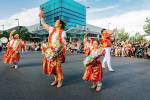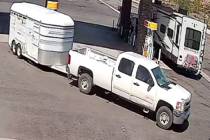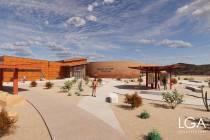Lingering drought taking toll on Northern Nevada wildlife

RENO — Lingering drought is taking a toll on wildlife across Northern Nevada, shrinking deer herds on the high desert, drying up fisheries in the valleys and starting to push everything from bears to snakes into urban areas they normally don’t frequent.
Mule deer especially are showing signs of stress, and some fisheries might be lost altogether by the end of the summer because of a third consecutive year of serious drought, state wildlife officials say.
“It’s stressing the animals, and it’s stressing the habitat itself,” said David Catalano, a supervisory biologist with the Nevada Wildlife Department.
Snowpack was low after a dismal winter, leading streams and creeks that normally flow into July or later to go dry in March or April, Catalano said. That’s causing small animals such as rabbits and squirrels to flock to neighborhoods where water, grass and insects are plentiful.
“They’ve got a miniecosystem that is flourishing, so all these little critters are drawn there,” Catalano said. “Now they are all competing a lot more for shelter and for foraging.”
The rodents attract predators. Catalano said calls regarding snakes on people’s property in the Reno-Sparks area have increased significantly since the drought began.
At Lake Tahoe and across the Carson Range, hungry bears are on the move because they can’t find the berries and other natural food sources.
Meanwhile, since 2012, Nevada’s mule deer herd has declined from an estimated 112,000 animals to about 108,000, said Cody Schroeder, the department’s specialist on the animal.


















